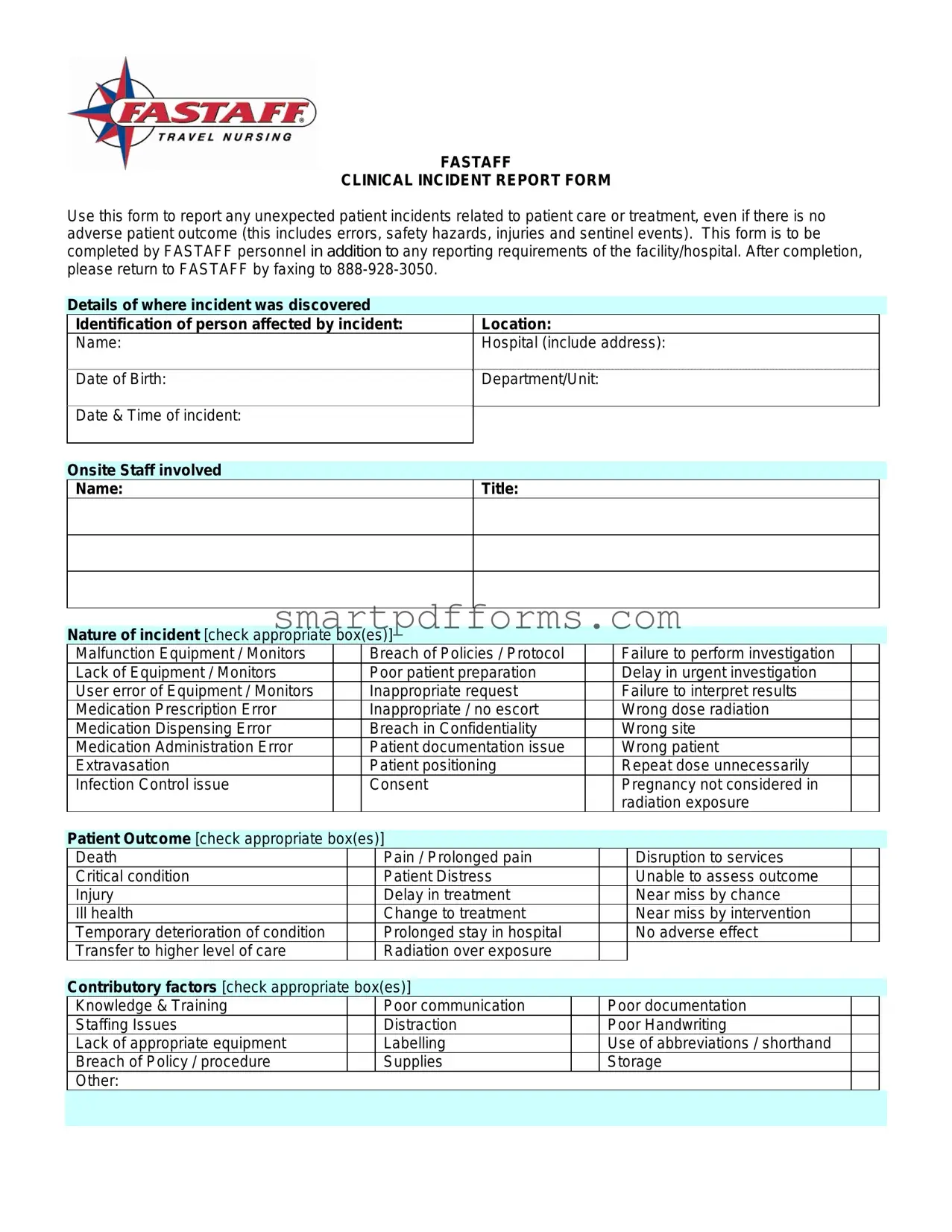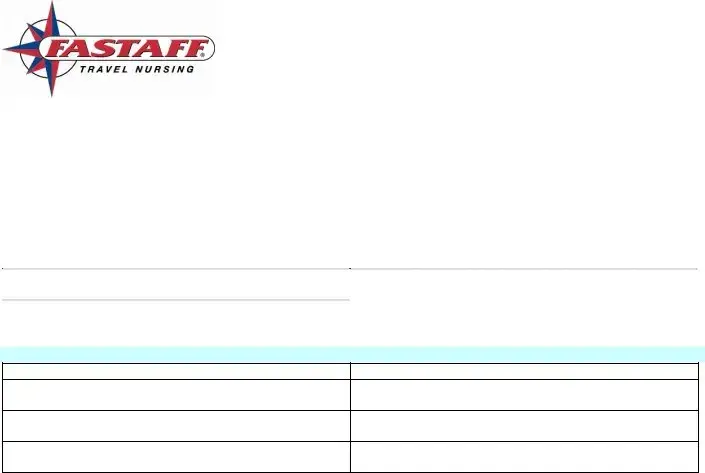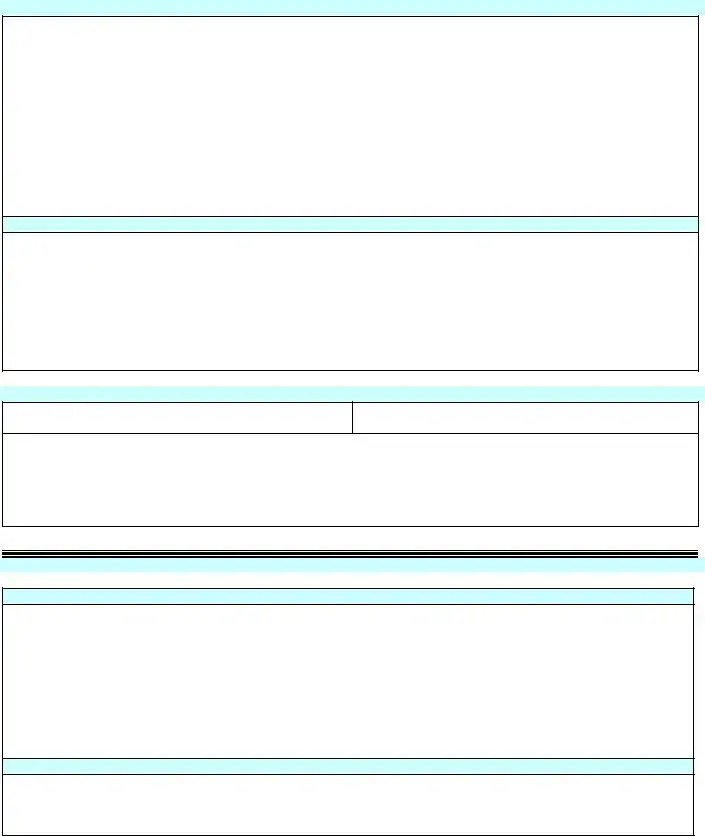Blank Clinical Incident Report Sample PDF Template
The FASTAFF Clinical Incident Report Form serves a crucial role in enhancing patient safety and care quality. Its purpose is to document any unexpected incidents relating to patient care or treatment, highlighting the importance of thorough reporting without regard to the outcome. By ensuring that all FASTAFF personnel utilize this form alongside any existing facility requirements, it aims to foster a culture of transparency and continuous improvement within healthcare settings. To effectively report an incident and contribute to the betterment of patient care practices, click the button below to fill out the form.
Make This Document Now


